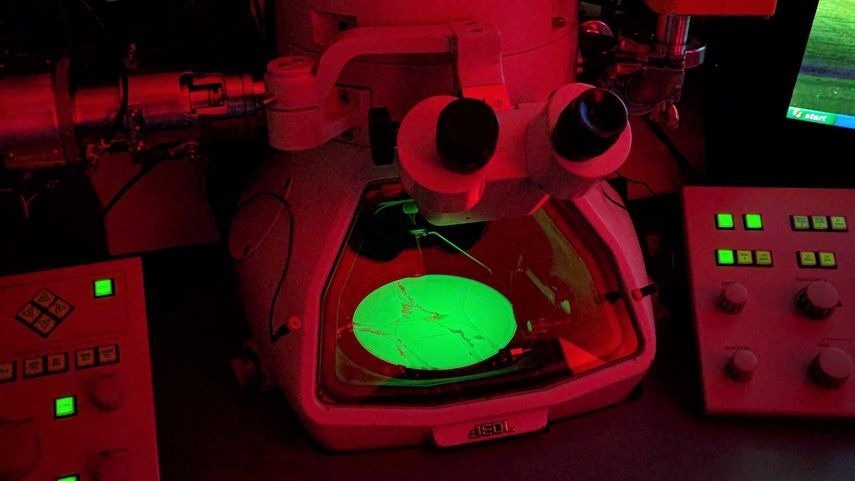A team of researchers from the Ultramicroscopy Research Group at Trinity has recently completed the installation of a world-first UAP transmission electron microscope lens. The UAP represents a significant leap forward, offering researchers unique control and flexibility in their investigations.

Image Credit: Trinity College Dublin
This installation follows five years of research and engineering efforts by the Ultramicroscopy team, led by Dr. Lewys Jones. The flexible choice of pole-piece gap between 1.5 mm and 6.5 mm, a world-first achievement, empowers researchers to select and optimise imaging conditions without the need for engineer callouts.
Dr. Jones says: “We are really excited to see this technology move out of the lab and into the hands of real end-users. Installing the UAP in our own testing lab is one thing, it’s a totally different endeavour to install one in the field. Meeting the quality and reliability specifications of a major national lab isn’t easy, but the UAP is better as a result.”
The novel TEM pole-piece was installed at Sandia National Laboratories, a globally renowned institution at the forefront of scientific innovation. This collaboration was initiated by Dr. Khalid Hattar, of the University of Tennessee at Knoxville and formerly a research scientist at Sandia's Center for Integrated Nanotechnologies (CINT).
Dr Hattar, a leading figure in in situ instrumentation and experimentation notes: “This new UAP technology will open up new avenues in in situ, operando, and multi-modal electron and ion characterisation. More than that, the flexibility to perform both niche and routine experiments in a single instrument will help improve utilisation and research throughput.”
Key Benefits:
User-selectable Gap Choice: TEM operators can choose pole-piece gaps between 1.5 mm and 6.5 mm, providing unparalleled flexibility without breaking the vacuum or needing engineer assistance.
Adaptive Imaging Performance: Researchers can optimize imaging conditions by selecting the gap size, smaller gaps for improved resolution or larger gaps for wider tilt-range and improved x-ray collection.
One-Stop TEM Tool
The newly UAP equipped TEM is able to provide for wider experimental choice locally in a single lab. This opens new possibilities and reduces the need to travel between different labs.
The UAP was installed by the Trinity team in Sandia’s JEOL 2100 and sets a new standard in electron microscopy capabilities. Dr. Chris Smyth, a staff member in Sandia's Ion Beam Laboratory and steward of the lab's JEOL 2100, expressed profound excitement about the world-first installation of the UAP lens, saying:
“The User Adjustable Pole-piece lens represents a monumental breakthrough in electron microscopy. Its operator-controlled gap selection capability unlocks unprecedented imaging control for researchers, enabling them to customise and optimise imaging conditions. This world-first achievement will undoubtedly accelerate scientific advancements and fuel innovation across Sandia’s core missions.”
This installation represents a significant upgrade to the laboratory’s facility, and cements Sandia’s Ion Beam Laboratory (IBL) as a world leader in electron and ion beam experimentation.
The research phase of this project received funding from Science Foundation Ireland, while the efforts to bring a usable product to market have been supported by Enterprise Ireland. Going forward, the Ultramicroscopy Research Group plans to offer the UAP via its new university spin-out – turboTEM.
This first UAP design can be installed in any new or existing 200 kV or 300 kV TEM from JEOL, and research is ongoing into wider vendor, holder and detector compatibility.